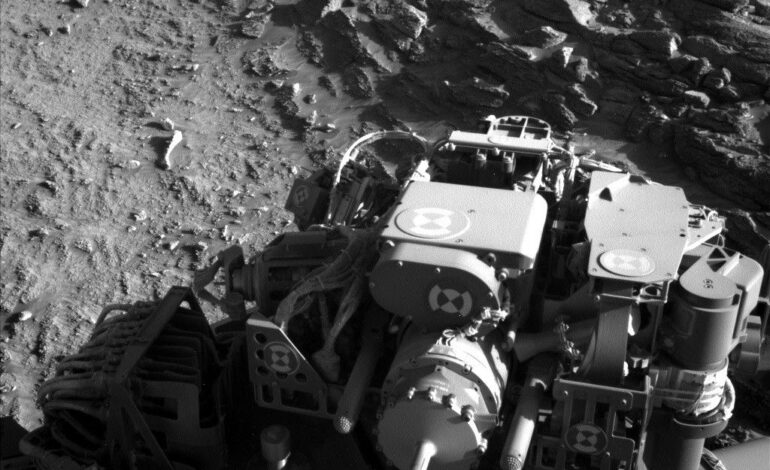Curiosity Rover Explores Martian Ridge for Scientific Insights

The NASA Mars rover Curiosity recently captured significant images and data during its exploration of a geological feature known as “Río Frío.” This event occurred on August 19, 2025, at 14:51:33 UTC, marking Sol 4634, or the 4,634th Martian day of the Mars Science Laboratory mission. Positioned against the wall of the fracture, Curiosity continues to shed light on the planet’s geological history.
Scientific Endeavors at Río Frío
At the fracture wall of Río Frío, Curiosity aims to unravel the internal structure and chemical composition of the surrounding ridges. These ridges are notable for their prominence compared to the flatter terrain, prompting scientists to investigate the reasons behind their unique formation. The data collected from this location could provide essential insights into Mars’ geological processes.
Curiosity’s team has planned extensive observations using various instruments. Large mosaics from the Mastcam will detail the ridge from its base to the top. Additionally, a MAHLI mosaic will focus on the horizon of the wall, revealing resistant nodules and smooth surfaces that likely represent mineral veins.
The scientific observations will also include chemical analyses. The APXS instrument will examine the nodule-filled target “Minimini,” while the SuperCam will analyze a vein at the target “El Tapado.” These analyses are expected to clarify the ridge’s composition and further enhance our understanding of the Martian environment.
Future Plans and Environment Monitoring
As part of the ongoing exploration, Curiosity plans to create a mosaic of the area at the base of the ridge, specifically targeting “Playa Zapatilla.” Beyond the ridge, the rover will gather additional data from the “Paniri” and “Mishe Mokwa” buttes, utilizing both Mastcam and ChemCam imaging. Observations of the Martian sky will also be conducted with the Navcam and Mastcam.
In addition to these primary objectives, instruments such as DAN, RAD, and REMS will continuously monitor the Martian environment, providing valuable context for the geological data collected.
Curiosity’s upcoming drive will take it to a smaller ridge positioned perpendicular to Río Frío, allowing scientists to further investigate the geological history recorded in these formations. As the rover navigates these Martian landscapes, it continues to contribute vital information that could reshape our understanding of the planet’s past.
To stay updated on the Curiosity mission and its scientific findings, interested readers can visit the official NASA website for more detailed reports and updates.






